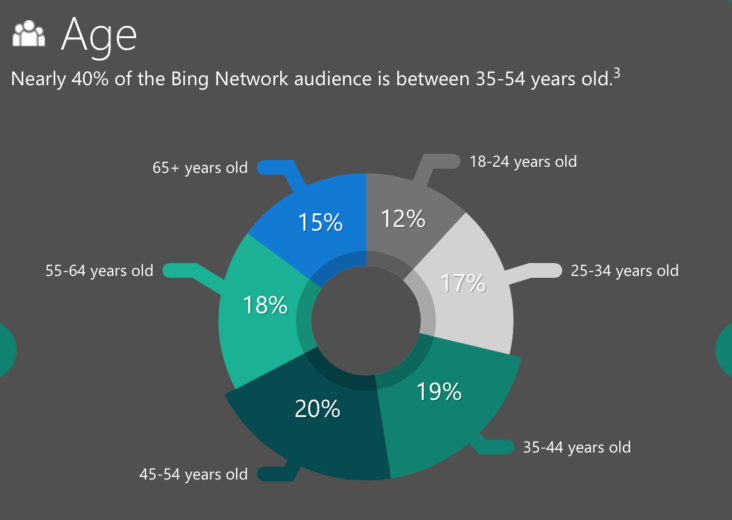Most advertisers focus their mobile efforts in Google AdWords. It has been shown that Google brings in a younger crowd that is generally more tech friendly than Bing users. Nearly 40% of Bing’s audience is between the ages of 35-54.
But nearly three-quarters of adults use smartphones and spend an average of 108 minutes each day on them. How do we successfully capture that mobile traffic through Bing?
Bidding Strategy
Create and apply Automated Rules that adjust your ad group and keyword bids automatically based on the conditions you set and the frequency you choose (once, daily, weekly, or monthly). They’ll help you respond to changes by increasing bids for competitive keywords, pausing low-performing ads, and keeping your ads on the first page or top of the page.
Bid on the top of page position to increase the chance your ads will be seen and clicked on. Recent Bing Ads research shows that Technology & Telecom ads on the top of page (or main line, as Bing refers to them) receive 91% of clicks and have a 12x higher CTR than sidebar ads.
Here are the metrics that matter for mobile (in addition to conversion numbers):
- Mobile Click-Through Rate – More prominent ad positions will increase this percentage.
- Mobile Impression Share – Below mobile position two you’re not likely to be shown at all and even less likely to be clicked on.
- Mobile Cost-Per-Click – Typically lower than desktop. Keep yours down with smart bidding strategy and highly targeted, convincing ads.
Tailor Messages
Customize your ads based on mobile searches. You could have ad copy that compels users to call a phone number rather than navigate to a website. Highlight offers that make sense for someone on the go, like “Schedule a Visit” or “Call Now,” as opposed to “Download a Free Trial” which generally makes no sense for mobile. Also, mobile devices tend to cut ad copy because of the small screen. Try writing concise, shorter ad copy so that you know your message will be seen.
Call extensions are also a must. Call extensions are helpful, clickable phone number that appear on mobile searches. It’s the essential, must-have ad extension for your mobile ads. Allow customers to bypass the small screen website on their phone and go straight to calling you.
Geo-Targeting
Geo-targeting helps customers find you easily. Advertisers should consider using location information while optimizing their PPC strategy for mobile. Advertisers can target a quarter mile radius around competing stores or their own store to draw people in and let them know they are close and should choose their store.
Location extensions are a close second to call extensions in terms of the most important ad extensions you should be using for your mobile search ads. It makes sense to try to help prospective buyers find your store. Locations extensions also take up a fair amount of real estate on the page and help your ads stand out to customers.
Final Thoughts
Bing Ads is quickly gaining all the mobile opportunities that are available in Google AdWords. Make sure that if nothing else, you are mirroring your current Google mobile strategy into Bing and optimizing as the data comes in. As many advertisers have found, the two platforms perform differently and just mirroring strategies doesn’t always produce the same results.




